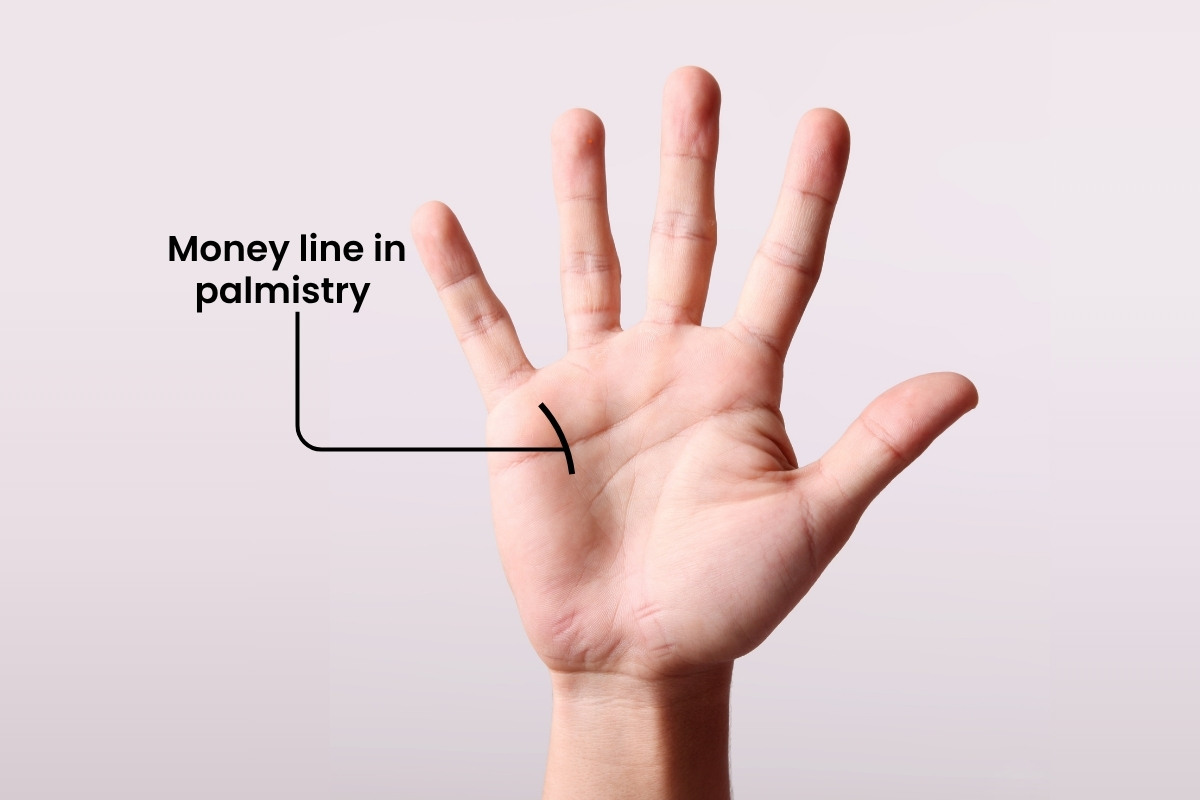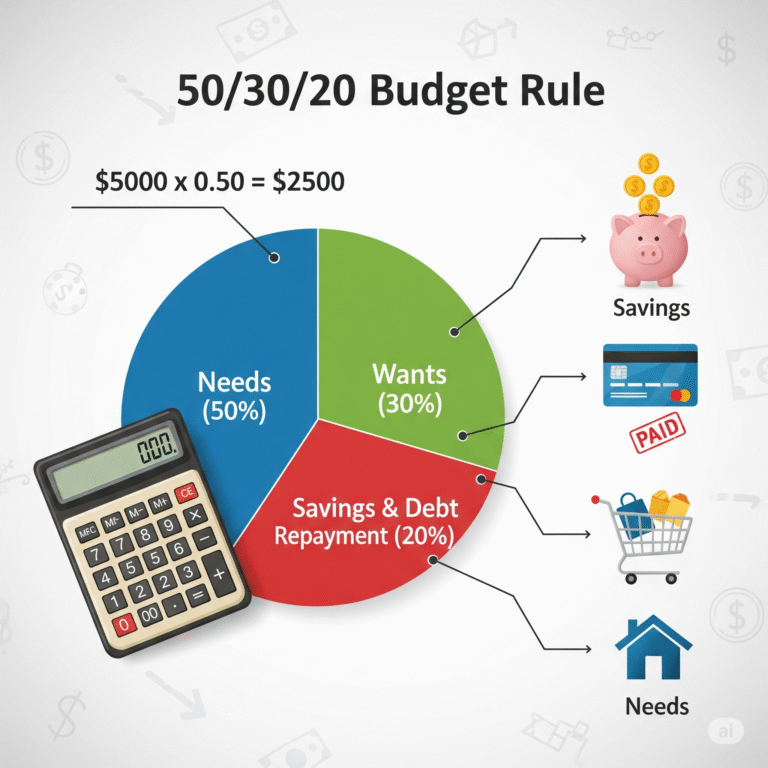💰 Money Line Strength Calculator
Select the palm line that best matches yours:
Palmistry and Wealth Your Money Line Revealed
Palmistry has fascinated people for centuries. Among the many lines in your palm, the money line is said to reveal insights into your financial destiny.Did you just utilize the Money Line Strength Calculator? Perhaps you are curious about what your results truly indicate for your financial future. The ancient practice of palmistry and your money line have long been used to give insights into personality, fortune, and wealth potential. Although science doesn’t support these concepts, palmistry can still be a useful method for considering your money behaviors and objectives.Palmistry has long been linked with wealth and opportunity. In this blog, we explore palmistry money line financial success, what your palm reveals about wealth potential and how to turn those insights into practical financial strategies.
In this piece, we will explore the money line in palmistry. We will see what various lines mean and most importantly, how to take those concepts and create a real-world plan for wealth.
What Is the Money Line?
The wealth line or the money line is a vertical line on your palm. It typically extends from the bottom of your hand close to your wrist in the direction of the mount below your pinky finger. Palm readers consider this line to reflect your connection to money, achievement, and material security.
- A deep, long money line usually indicates robust financial fortune and stability.
- A short or thin line may indicate ups and downs or trouble with handling money.
- A broken or incomplete line may indicate sudden financial shifts or risky decisions.
Yes, your destiny is not fixed. These lines can act as a mirror and remind you of your money habits and provide you with an opportunity to do better with money.
What Each Money Line Type Means
Palmistry is symbolic, but many symbols have to do with financial psychology. Here’s how your calculator result could apply to you:
1. Short and Faint Money Line
This will usually indicate financial uncertainty or difficulty adhering to a savings program.
What to consider: You may need to be more disciplined in order to save money on a regular basis.
Action to take: Begin with small savings targets, such as saving $50 a month. Consistency is more crucial than how much you save.
2. Broken or Unclear Line
A broken line indicates financial uncertainty, possibly due to career changes, debt, or unexpected expenses.
What to think about: Prepare for fluctuations. Flexibility and adaptability are important.
Action to take: Create an emergency fund. Strive to save 3 to 6 months’ worth of living costs. This will serve as a shock absorber for any unforeseen shocks.
3. Long but Light Line
This line indicates you have the potential for wealth, but it asks you to develop stronger tendencies.
What to consider: You have plenty of ambition, but cash could slip through fingers if you lack solid financial systems.
Action to take: Record your spending each week and establish automatic savings. This will help you fortify your financial foundation.
4. Deep and Straight Line
This line is an indicator of great financial management skills.
What to think about: You’re likely already smart with your cash.
Action to take: Invest in long-term investments such as index funds, property, or retirement funds to accumulate wealth over the years.
5. Long, Deep, and Unbroken Line
This is considered a “perfect” money line. It indicates stability, superb opportunities, and possibility of actual prosperity.
What to consider: You are already headed towards financial success.
Action to take: Think about opening your own company or investing in a diversified manner to achieve maximum growth.
From Palmistry to Real Wealth
Palmistry is a rich metaphor, but true wealth is founded on actual action. Whether your money line is pale or robust, here are some eternal money management principles to keep in mind:
- Budgeting is your foundation: You need to know where your money is going every month. One basic rule to abide by is the 50/30/20 rule 50% for needs, 30% for desires, and 20% for savings and investments. To make it even simpler, we’ve created a free 50/30/20 budget calculator. Simply input your monthly income, and you’ll see how much to spend on necessities, how much you can indulge on discretionary items, and how much to save or put towards debt.
- Save first: Pay yourself first. Have an automatic transfer to a savings or investment account the very moment that you are paid. Our Free Savings Goal Calculator helps you save money disciplined and provides a clear plan to your savings goal.
- Manage debt well: Clear high-interest debt such as credit cards as quickly as possible. Don’t get “bad debt” which doesn’t generate any value for you. Our Deferred Payment Loan Calculator helps you quickly determine how much you will owe at the end of your loan term, depending on the loan amount, term length, interest rate, and compounding frequency.
- Invest in the long run: Compound interest is stronger than palm reading. Begin early, even with a small sum of money. With our free ROI Calculator, you can easily calculate your percentage return, annualized performance, and even your net profit after expenses. Try this fast quiz to find out your risk profile and optimal portfolio composition
- Guard your wealth: Create a cushion of savings and consider taking out insurance to deal with life’s surprises. Life is uncertain,medical expenses, losing a job, or unexpected expenses can strike when least expected. Financial experts, therefore, advise having an emergency fund as a backup. Use our free Emergency Fund Calculator to calculate How much you should save for emergencies
- Follow the right attitude: Have faith that economic freedom is attainable. The self-discipline you exhibit today will build freedom for tomorrow.
This site is a trusted resource created by a commission of U.S. government agencies. It offers a wide range of free financial education resources on topics directly related to your article’s practical advice, such as budgeting, saving, and financial planning.
The Symbolic Power of Palmistry
Whether you do or don’t believe in palmistry, symbols such as the money line are a reminder of a couple of key things:
- Your daily habits determine your destiny: The small fiscal choices you make each day shape your future.
- Self-knowledge is potent: Spending time considering your strengths and weaknesses results in wiser money decisions.
- Your story moves you: Your palm’s story can inspire you to create your own path to financial success.
Closing Thoughts
Your palm might have a weak, broken, or robust money line, but the real wealth is in what you do today. Palmistry is a mirror, not a map.
- A weak line does not condemn you. It’s a challenge to establish discipline.
- A good line is no assurance. It’s a challenge to unlock your full potential.
Ultimately, your money line is literally and figuratively within your grasp. When you harness the ancient knowledge of palmistry and bring it together with contemporary financial planning, you’re on the way to security, stability, and success.
How will you use this knowledge to write your own financial success story!
That’s a great plan. Building these components is important for an all-encompassing SEO and AEO (Answer Engine Optimization) plan. Below are the optimized components to your blog post.
FAQs (Frequently Asked Questions)
What is the money line in palmistry?
The money line, sometimes called the wealth line, is usually a vertical line in the palm that runs from the bottom of the hand toward the pinky finger. Palmists consider this line to be an indication of a person’s relationship with money, financial security, and success potential.
Is a broken money line an indicator that I’ll be a pauper?
Not really. In palmistry, a broken or indistinct money line doesn’t mean poverty. Rather, it can represent financial instability, changes in career, or the need to be adaptable and ready for the unforeseen expense. The line is a metaphor to motivate you to create a more solid economic foundation, i.e., an emergency fund.
What is the “ideal” money line?
A “perfect” money line is usually characterized as long, deep, and uninterrupted. Such a line is believed to indicate good financial management abilities, stability, and prospects of prosperity. Yet one should not forget that this is a symbolic representation, and actual financial success lies in actual deeds and wise habits.
How can I change my finances for better if I have a weak money line?
A weak money line may serve as a warning to toughen up your financial responsibility. To make improvements, you can begin with a simple budget, automatic savings transfers, and paying off high-interest debt first. Regularity in doing these will be the strongest method to accumulate wealth, no matter what palm lines you have.
Is palmistry an actual method to forecast financial wealth?
Though palmistry is an interesting ancient practice, there is no scientific proof that it can effectively predict wealth. The most effective way to accomplish economic objectives is through practical methods such as budgeting, saving, investing, and practicing a positive and responsible money attitude. Practice palmistry as an entertaining exercise to examine your behaviors, rather than as a definite chart of your destiny.







